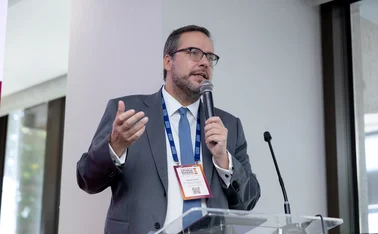
St Louis Fed creates educational ‘multiplier effect’
Head of economic education at the St Louis Fed talks to Central Banking about its approach to financial inclusion
The Federal Reserve Bank of St Louis now runs a financial inclusion programme that reaches thousands of students, after scrapping its more direct education programme, Mary Suiter, head of economic education at the Fed bank tells Central Banking.
“The best approach for economic education is to provide teachers with high quality materials and professional development so they can go back into the classroom and teach it,” Suiter says.
She says when she first arrived at the St Louis Fed in 2006, the economic education department was very focused on direct student programmes, where it took on the role of teaching itself.
“We had limited staff and lots of schools,” she said. Once the Fed bank had taught one classroom of students, it would then have to go back to the school the next year to teach a whole new set of students.
“It’s a really inefficient way to deliver the programme, so we pulled back very much from direct student programmes,” she said. The Fed bank now only does a limited number of direct student programmes.
Multiplier effect
Moving to a programme where you provide professional courses for teachers and create educational materials can have a “multiplier effect”, Suiter explains.
“If you teach one teacher and their career is 10 years you reach hundreds of students, thousands of students in some cases over the lifetime of that teacher,” she says.
“We get a multiplier effect from that,” Suiter says. “So it really pays off for us in the long run.”
From September 2017 to August 2018, the St Louis Fed’s teaching resource website had 1.1 million new student enrolments and 1.2 million resource downloads, a 38% increase from the previous year.
It also reached more than 460,000 students via its programmes, and within the reserve bank’s district it has reached 85% of lower-income schools.
Native American tribes
The St Louis Fed has also begun to expand its programmes into new demographics, specifically the indigenous community. It has recently forged a partnership with Native American tribe Osage Nation to provide culturally sensitive curriculum material.
“We provide training for their ‘head start’ teachers, so those teachers who are teaching preschool, and then moving up with their elementary middle and high school,” Suiter explains.
The initial training programme provided more than 60 Osage Nation educators with material to teach students about economics and personal finance in the Osage language.
Only users who have a paid subscription or are part of a corporate subscription are able to print or copy content.
To access these options, along with all other subscription benefits, please contact info@centralbanking.com or view our subscription options here: subscriptions.centralbanking.com/subscribe
You are currently unable to print this content. Please contact info@centralbanking.com to find out more.
You are currently unable to copy this content. Please contact info@centralbanking.com to find out more.
Copyright Infopro Digital Limited. All rights reserved.
As outlined in our terms and conditions, https://www.infopro-digital.com/terms-and-conditions/subscriptions/ (point 2.4), printing is limited to a single copy.
If you would like to purchase additional rights please email info@centralbanking.com test test test
Copyright Infopro Digital Limited. All rights reserved.
You may share this content using our article tools. As outlined in our terms and conditions, https://www.infopro-digital.com/terms-and-conditions/subscriptions/ (clause 2.4), an Authorised User may only make one copy of the materials for their own personal use. You must also comply with the restrictions in clause 2.5.
If you would like to purchase additional rights please email info@centralbanking.com test test test








